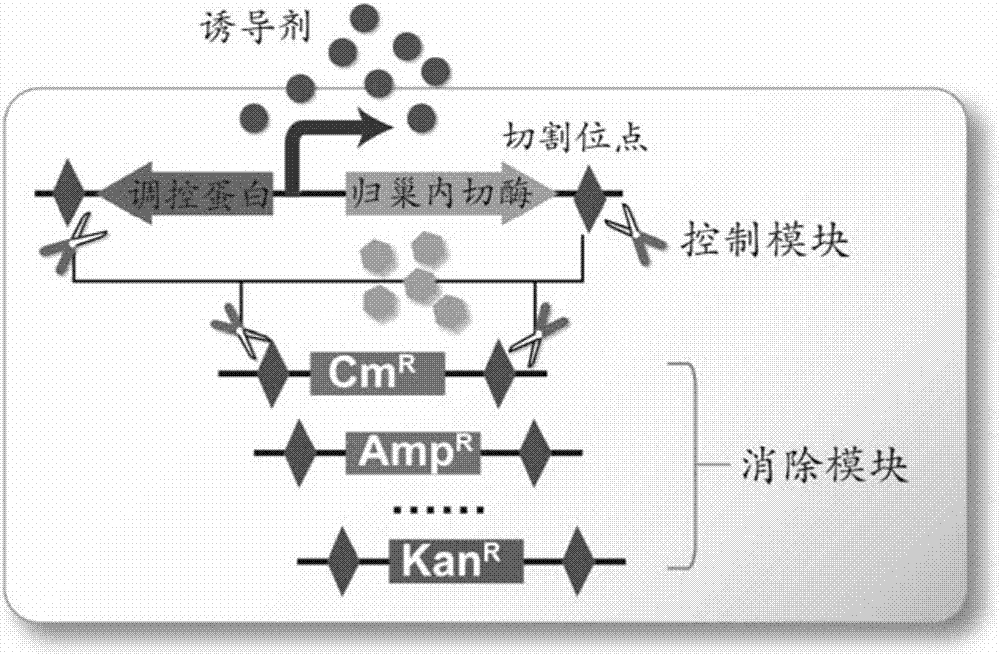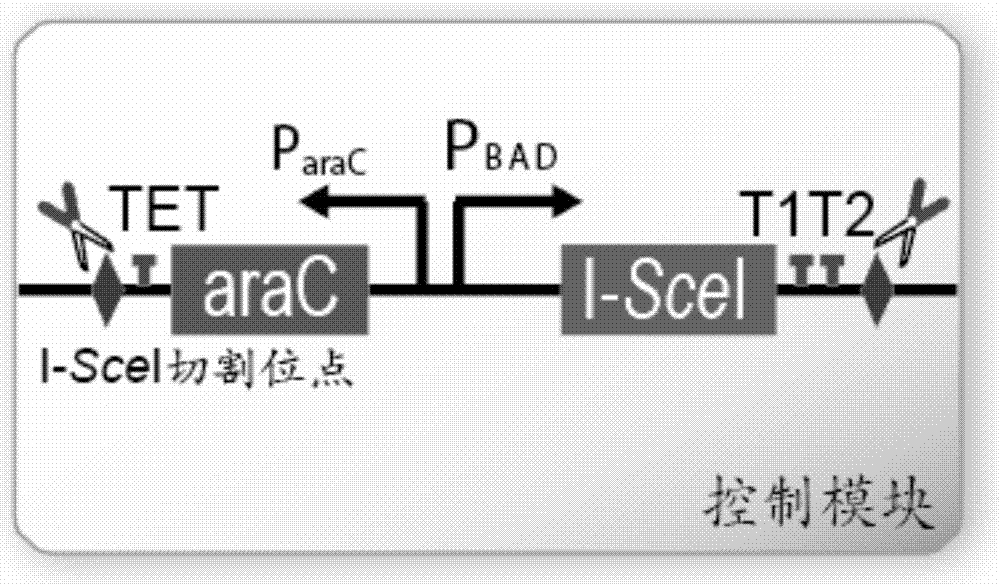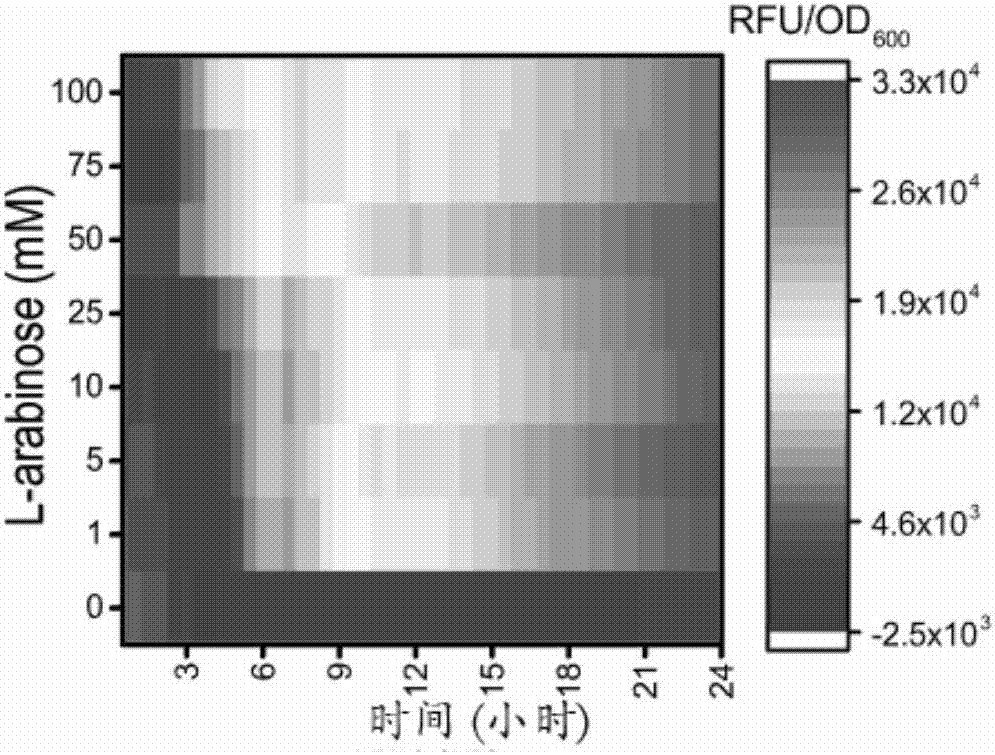Controllable vector elimination method as well as easy-to-use CRISPR-Cas9 tool
A carrier and tool technology, applied in the field of genetic engineering, can solve problems such as large workload and time, and achieve the effect of easy elimination and rapid genetic modification
- Summary
- Abstract
- Description
- Claims
- Application Information
AI Technical Summary
Problems solved by technology
Method used
Image
Examples
Embodiment 1
[0057] Example 1. Design, construction and application of controllable carrier elimination gene circuit
[0058] 1. Materials and methods
[0059] 1. Strains, plasmids and culture methods
[0060] All strains and plasmids used in this example are listed in Table 1. Among them, Escherichia coli NEB10β was used as a cloning strain and the phenotypic verification of the gene circuit. All E. coli were cultured in LB medium. Except for the strain containing plasmid pKD46 which was grown at 30°C, the other strains were grown at 37°C. The composition of LB medium is: peptone 10g / L, yeast powder 5g / L, NaCl 10g / L. Add 15g / L agar to the solid medium.
[0061] Antibiotics were added to the above strains as needed: 100 μg / mL ampicillin, 50 μg / mL kanamycin, 20 μg / mL chloramphenicol, and 200 μg / mL erythromycin. L-arabinose, as an inducer, was added to the medium according to the concentration indicated in the text.
[0062] The strains were cultured statically in an incubator, or vib...
Embodiment 2
[0163] Example 2, the establishment and application of the easy-to-use CRISPR-Cas9 system in Escherichia coli
[0164] 1. Materials and methods
[0165] 1. Strains, plasmids and culture conditions
[0166] The strains and plasmids used in this example are listed in Table 5, and the culture conditions are the same as those described in Step 1 of Example 1. Wild-type E.coli MG1655 was used to construct atrazine-degrading strains. L-arabinose and IPTG were used as inducers, and were added to the medium according to the concentrations indicated in the text. 5-Bromo-4-chloro-3-indolyl-β-D-galactopyranoside (X-gal) was coated on the surface of LB solid plate for blue and white spot screening.
[0167] Table 5 The strains and plasmids used in this study
[0168]
[0169] 2. Sequence Analysis
[0170] Sequence analysis is the same as Step 1-2 of Example 1. Determine the N20 sequence of the sgRNA by searching the genome.
[0171] 3. DNA manipulation
[0172] For the DNA oper...
PUM
 Login to View More
Login to View More Abstract
Description
Claims
Application Information
 Login to View More
Login to View More - R&D
- Intellectual Property
- Life Sciences
- Materials
- Tech Scout
- Unparalleled Data Quality
- Higher Quality Content
- 60% Fewer Hallucinations
Browse by: Latest US Patents, China's latest patents, Technical Efficacy Thesaurus, Application Domain, Technology Topic, Popular Technical Reports.
© 2025 PatSnap. All rights reserved.Legal|Privacy policy|Modern Slavery Act Transparency Statement|Sitemap|About US| Contact US: help@patsnap.com



